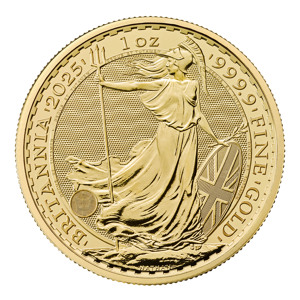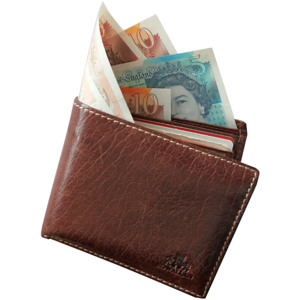Tavex uses cookies to ensure website functionality and improve your user experience. Collecting data from cookies helps us provide the best experience for you, keeps your account secure and allows us to personalise advert content. You can find out more in our cookie policy.
Please select what cookies you allow us to use
Cookies are small files of letters and digits downloaded and saved on your computer or another device (for instance, a mobile phone, a tablet) and saved in your browser while you visit a website. They can be used to track the pages you visit on the website, save the information you enter or remember your preferences such as language settings as long as you’re browsing the website.
| Cookie name | Cookie description | Cookie duration |
|---|---|---|
| tavex_cookie_consent | Stores cookie consent options selected | 60 weeks |
| tavex_customer | Tavex customer ID | 30 days |
| wp-wpml_current_language | Stores selected language | 1 day |
| AWSALB | AWS ALB sticky session cookie | 6 days |
| AWSALBCORS | AWS ALB sticky session cookie | 6 days |
| NO_CACHE | Used to disable page caching | 1 day |
| PHPSESSID | Identifier for PHP session | Session |
| latest_news | Helps to keep notifications relevant by storing the latest news shown | 29 days |
| latest_news_flash | Helps to keep notifications relevant by storing the latest news shown | 29 days |
| tavex_recently_viewed_products | List of recently viewed products | 1 day |
| tavex_compare_amount | Number of items in product comparison view | 1 day |
| Cookie name | Cookie description | Cookie duration |
|---|---|---|
| chart-widget-tab-*-*-* | Remembers last chart options (i.e currency, time period, etc) | 29 days |
| archive_layout | Stores selected product layout on category pages | 1 day |
| Cookie name | Cookie description | Cookie duration |
|---|---|---|
| cartstack.com-* | Used for tracking abandoned shopping carts | 1 year |
| _omappvp | Used by OptinMonster for determining new vs. returning visitors. Expires in 11 years | 11 years |
| _omappvs | Used by OptinMonster for determining when a new visitor becomes a returning visitor | Session |
| om* | Used by OptinMonster to track interactions with campaigns | Persistent |
| Cookie name | Cookie description | Cookie duration |
|---|---|---|
| _ga | Used to distinguish users | 2 years |
| _gid | Used to distinguish users | 24 hours |
| _ga_* | Used to persist session state | 2 years |
| _gac_* | Contains campaign related information | 90 days |
| _gat_gtag_* | Used to throttle request rate | 1 minute |
| _fbc | Facebook advertisement cookie | 2 years |
| _fbp | Facebook cookie for distinguishing unique users | 2 years |
Why an Increase in Marriage Causes an Increase in Gold Purchases?

Marriage and gold share a unique relationship in many cultures worldwide. With an increase in marriage rates, there’s often a corresponding rise in gold purchases. But why does this happen?
The answer lies in a mix of cultural practices, financial preferences, and economic impacts that have intertwined gold with marriage traditions.
Let’s explore the factors that drive the demand for gold during wedding seasons and why this trend continues to grow.
Gold’s Cultural Significance in Weddings

Gold is more than just a metal; it holds deep cultural importance, especially during weddings. Across many cultures, gold is seen as a symbol of wealth, prosperity, and luck – qualities that families wish to bestow on newlyweds as they embark on a new life together.
This tradition of giving gold signifies blessings for a prosperous life and symbolises financial security and stability
- Symbolism of Prosperity: Gold often represents prosperity, a fitting wish for a couple starting their life together. Wearing or gifting gold signifies the family’s desire for the couple’s wealth and well-being.
- Status Symbol: In many societies, displaying gold at weddings is a symbol of social status. Families show their social standing by the amount and quality of gold presented during the wedding ceremony, showcasing financial strength and pride.
Historical Role of Gold in Marriage Customs

The role of gold in marriage is deeply rooted in history. In many countries, gold has been used for centuries as a form of dowry and a symbol of familial wealth.
- Gold as Dowry: Historically, gold has often been part of a dowry – a gift given to the bride by her family as financial support for her future. This dowry, often in the form of gold jewellery, serves as a secure asset that the bride can keep throughout her life.
- Traditional Ceremonies and Gold Gifts: In countries like India, China, and many parts of the Middle East, weddings involve gifting gold jewellery to the bride and groom as part of the ceremony, representing blessings from family members.
- Wedding Attire: Brides in several cultures wear gold jewellery as part of their wedding attire. This jewellery not only enhances the bride’s appearance but also adds to her family’s reputation, given the cultural and financial value of the gold worn.
Economic Influence of Marriage-Related Gold Purchases

An increase in marriage rates has a notable economic impact, and gold purchases are an integral part of this. Gold is often considered a stable and appreciating asset, making it a valuable investment for newlyweds and their families.
- Long-Term Asset and Family Investment: For many families, purchasing gold is a form of securing wealth. The gold bought for weddings becomes part of the family’s long-term assets, one that can be passed down through generations.
- Financial Security for Couples: Gold offers a form of security for the couple’s future, as it can be easily liquidated in times of need. Given its value retention, families view it as a wise investment for young couples starting their lives together.
Cultural Expectations and Gold Purchases
Gold purchases are influenced heavily by cultural expectations surrounding weddings. Societies often pressure families to buy gold as a form of gift or dowry, and this cultural norm has strengthened the link between marriage rates and gold demand.
- Pressure from Tradition: In cultures where tradition dictates that gold be given during weddings, families often feel obligated to follow these practices to maintain social respect.
- Influence of Societal Norms: Societal norms, especially in Asian and Middle Eastern countries, play a significant role. In these societies, the amount of gold given reflects the family’s dedication and generosity, leading to a direct increase in gold demand as marriages rise.
Role of Gold as an Investment During Weddings

Gold’s role as an investment is particularly relevant during weddings, where it serves as a financial cushion for the couple. In addition to its cultural symbolism, gold is valued for its stability and liquidity.
- Liquid Asset for Financial Stability: Gold is seen as a “safe haven” asset. Newlyweds and their families can rely on it as a fallback if financial challenges arise in the future.
- Building Family Wealth: Many families purchase gold during weddings as a way of adding to the couple’s financial foundation. Since gold appreciates over time, it’s viewed as an asset that can grow
Future of Gold Demand in Relation to Marriage Rates
The future demand for gold is likely to remain linked to marriage rates, though modern trends and economic conditions may reshape how gold is purchased for weddings.
- Marriage Rates and Gold Demand Projections: As more couples opt for non-traditional weddings or prefer alternative investments, there may be a shift in demand. However, in regions where gold holds strong cultural value, this relationship will likely remain steady.
- Evolving Wedding Customs: In some societies, younger generations are moving away from traditional wedding customs, which could reduce gold’s role in weddings.
On the other hand, emerging economies experiencing growth may see higher marriage rates and continued demand for gold
Conclusion
The connection between marriage rates and gold purchases highlights how deeply intertwined this precious metal is with the social, cultural, and economic aspects of weddings. Gold represents much more than wealth; it embodies security, tradition, and familial blessings that many cultures deem essential for a couple’s start in life.
Whether as an investment, a cultural requirement, or a symbol of enduring love, gold remains a valued aspect of marriage ceremonies worldwide. As marriage customs evolve, gold’s role may adapt, but its appeal during weddings is unlikely to diminish significantly.


















